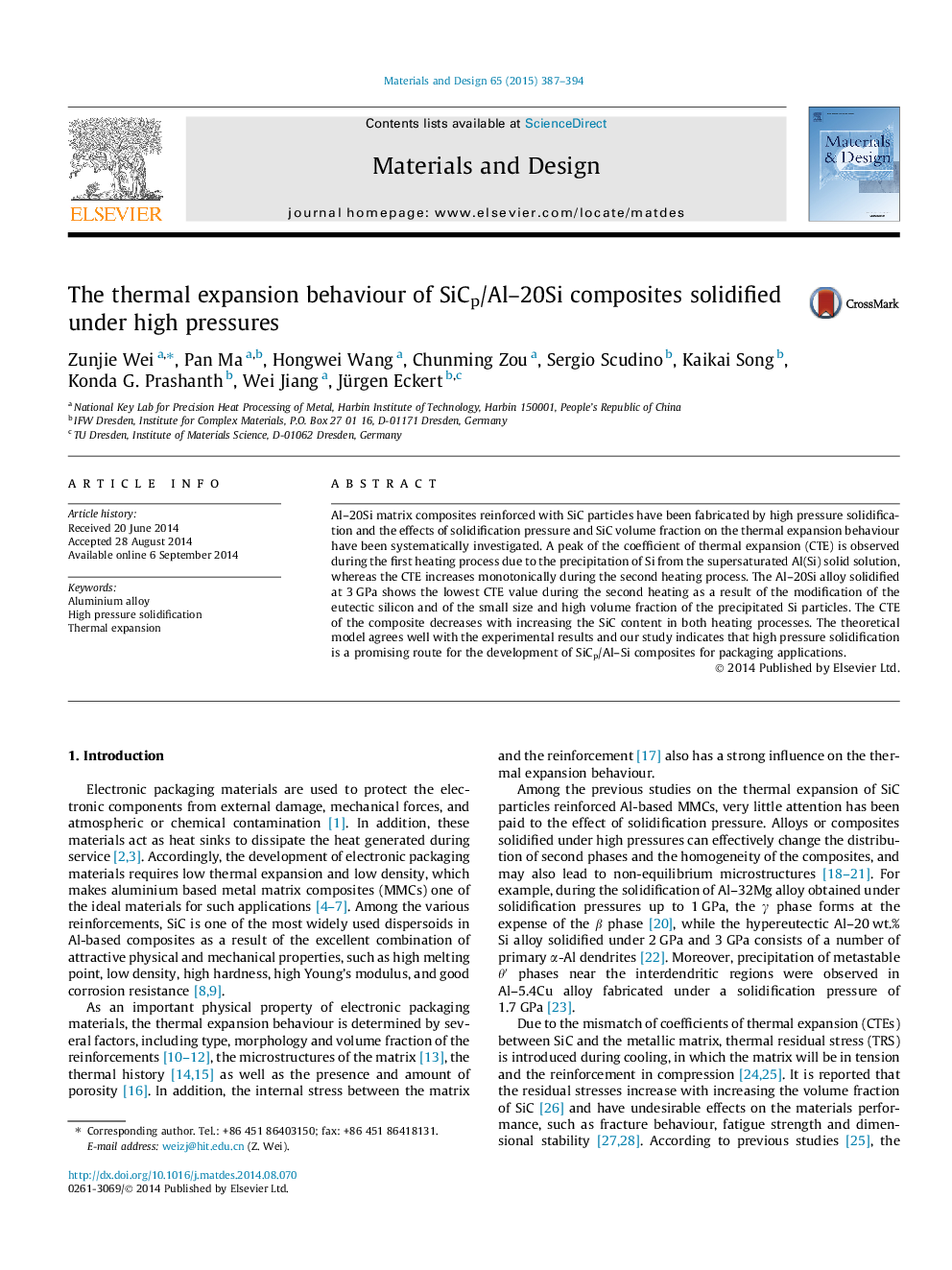| Article ID | Journal | Published Year | Pages | File Type |
|---|---|---|---|---|
| 828818 | Materials & Design (1980-2015) | 2015 | 8 Pages |
•A CTE peak is observed during the first heating after high pressure solidification.•The CTE decreases with increased solidification pressure during the second heating.•The formation of Al(Si) supersaturated solid solution can reduce CTE.•Modification of eutectic silicon and Si precipitates from Al can reduce CTE.•The experimental results agree well with the theoretical model.
Al–20Si matrix composites reinforced with SiC particles have been fabricated by high pressure solidification and the effects of solidification pressure and SiC volume fraction on the thermal expansion behaviour have been systematically investigated. A peak of the coefficient of thermal expansion (CTE) is observed during the first heating process due to the precipitation of Si from the supersaturated Al(Si) solid solution, whereas the CTE increases monotonically during the second heating process. The Al–20Si alloy solidified at 3 GPa shows the lowest CTE value during the second heating as a result of the modification of the eutectic silicon and of the small size and high volume fraction of the precipitated Si particles. The CTE of the composite decreases with increasing the SiC content in both heating processes. The theoretical model agrees well with the experimental results and our study indicates that high pressure solidification is a promising route for the development of SiCp/Al–Si composites for packaging applications.
